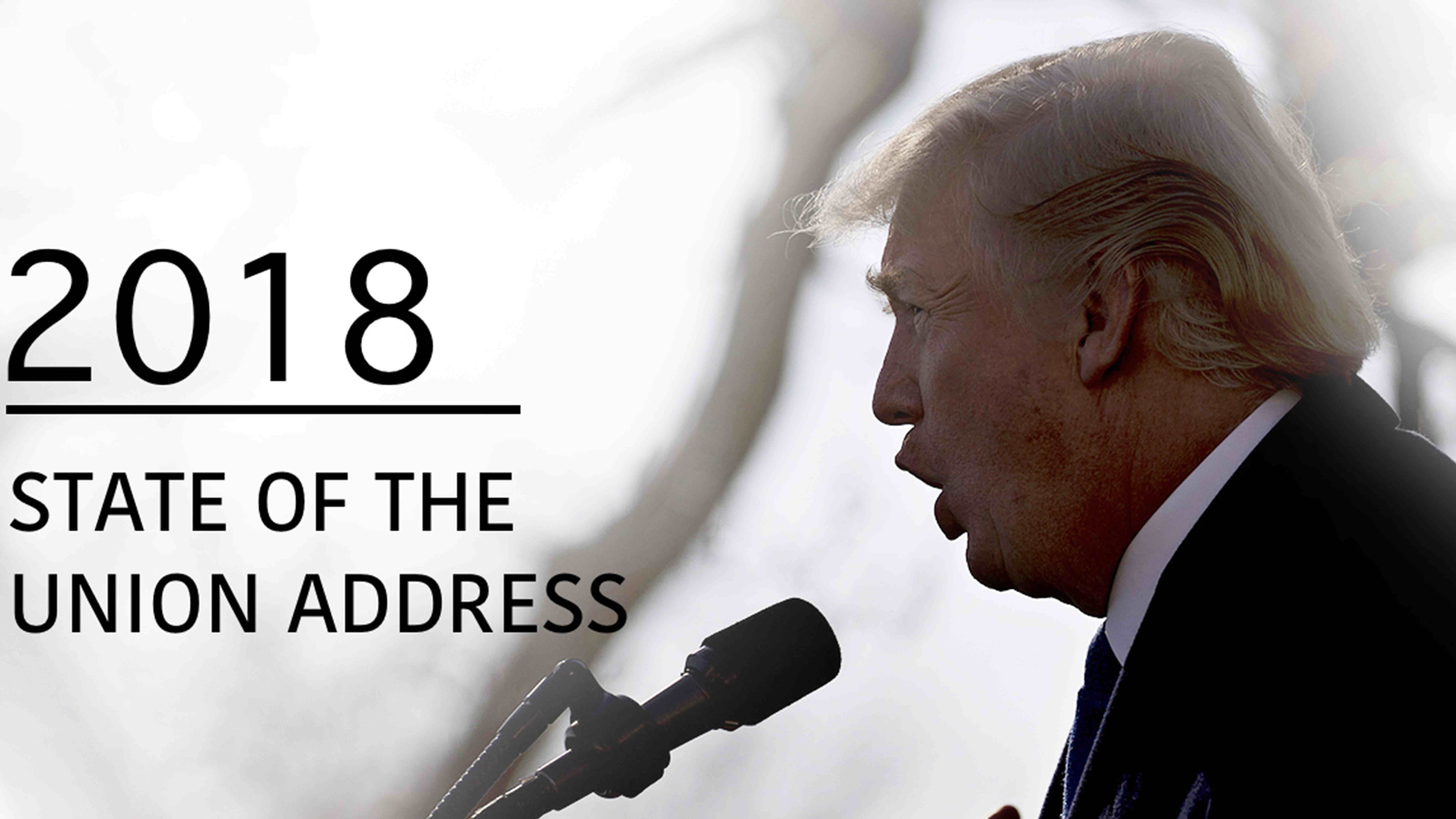The 2018 State of the Union Address will be given by the 45th President of the United States, Donald Trump, on Tuesday, January 30, in the chamber of the United States House of Representatives and will be addressed to the 115th United States Congress.
There is no doubt that the President succeeded in drawing the world's attention in the last year; now he is ready to be eye-catching again at the beginning of 2018. The plans of America in vital areas, the political direction, and the chances of Republicans in the midterm elections make Trump's State of the Union address important.
What is State of the Union address?
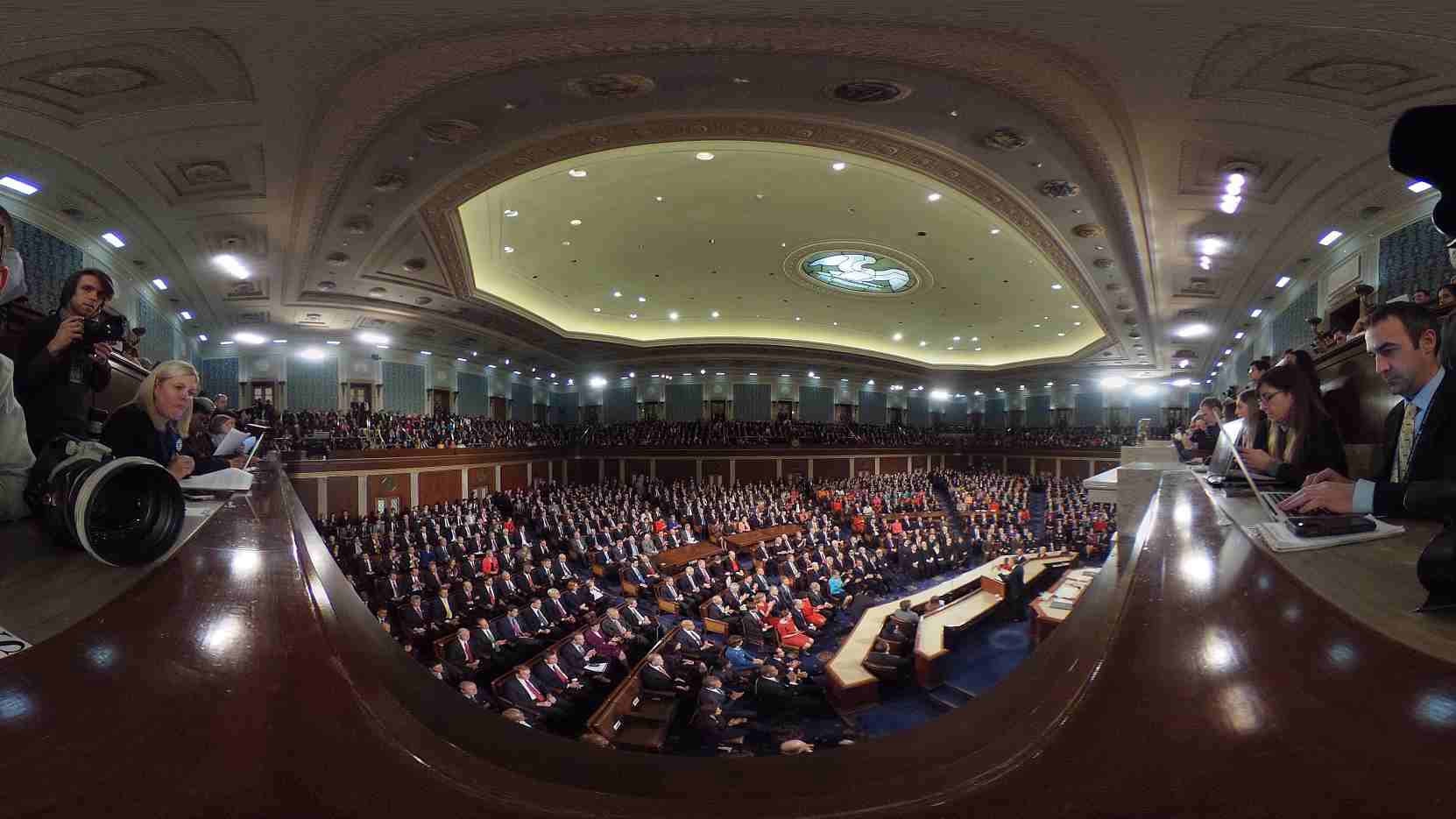
A joint session of Congress assembles for Barack Obama's final State of the Union speech in the House chamber of the US Capitol January 12, 2016 in Washington. /VCG Photo
A joint session of Congress assembles for Barack Obama's final State of the Union speech in the House chamber of the US Capitol January 12, 2016 in Washington. /VCG Photo
The history of State of the Union address can be traced back to 1790, when President George Washington delivered a regular address before a joint session of Congress in New York.
In 1934, President Franklin D. Roosevelt restyled "the President's Annual Message to Congress," as the "Annual Message to Congress on the State of the Union."
It was informally called the "State of the Union" message or address from 1942 to 1946, and since 1947, it has officially been known as the State of the Union Address. Traditionally, a president should be in office for a year before giving their first State of the Union address.
The occupant of the White House usually uses the occasion to reflect on the previous year and highlight the administration's legislative agenda and priorities for the country.
Words in 2017 and clues for 2018
President Trump's 2018 State of the Union address will be his first and his second speech to a joint session of Congress.
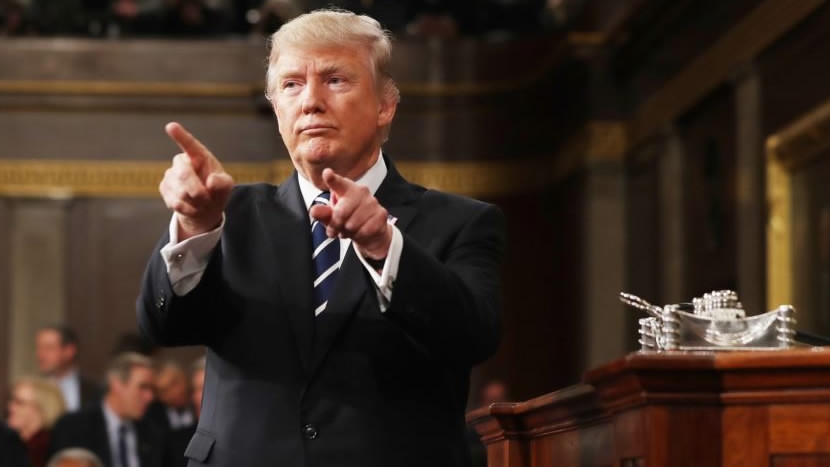
President Donald Trump reacts after delivering his first address to a joint session of Congress from the floor of the House of Representatives in Washington, Feb. 28, 2017. /Reuters Photo
President Donald Trump reacts after delivering his first address to a joint session of Congress from the floor of the House of Representatives in Washington, Feb. 28, 2017. /Reuters Photo
Trump gave his first public address before a joint session of the United States Congress on February 28, 2017. Similar to a State of the Union address, it was delivered before the 115th United States Congress in the Chamber of the United States House of Representatives in the United States Capitol.
According to a senior administration official at a briefing on the matter, the theme of the Trump's speech will be "building a safe, strong and proud America.” Jobs and the economy, immigration, infrastructure, trade and national security will be included in his address, as in the 2017 speech.
Economy
“The stock market has gained almost 3 trillion dollars in value since the election on November 8th, a record.” – Trump in 2017 address
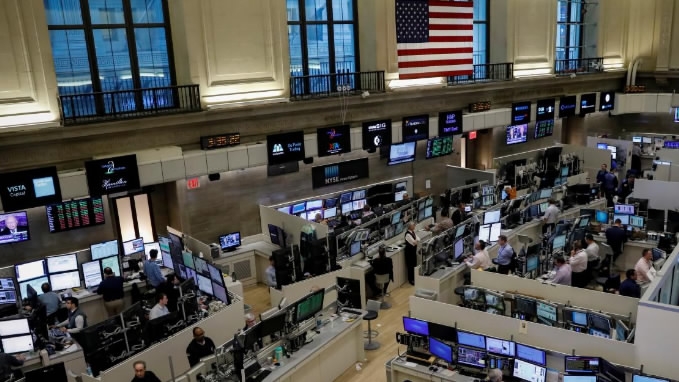
Traders work on the floor of the American Stock Exchange (AMEX) at the New York Stock Exchange (NYSE) in New York City on October 27, 2017. /Reuters Photo
Traders work on the floor of the American Stock Exchange (AMEX) at the New York Stock Exchange (NYSE) in New York City on October 27, 2017. /Reuters Photo
The basic trajectory of the economy under President Trump remains the same as it was under President Obama. According to the report of the White House press briefing in December 2017, the unemployment rate is down to 4.1 percent and has remained there, putting the labor market at or close to so-called full employment after 81 consecutive months of growth.
The Wall Street Journal's survey of economists earlier this month showed that although economists widely expect US economic growth to accelerate further to 2.7 percent in 2018, growth will gradually fall back to 2.2 percent in 2019 and 2 percent in 2020.
When asked whether the president's policies are responsible for the economic boom, 32 percent said "mostly" while 39 percent said "partially." Only 27 percent give his policies no credit for the economy's performance, according to CBS News.
Tax reform
“My economic team is developing historic tax reform that will reduce the tax rate on our companies so they can compete and thrive anywhere and with anyone.” – Trump in 2017 address
President Trump signed the biggest overhaul of the
US tax system in a generation into law on December 22, 2017. The package included a slash in corporation tax from 35 per cent to 21 per cent, as well as a cut to the top rate of personal tax.
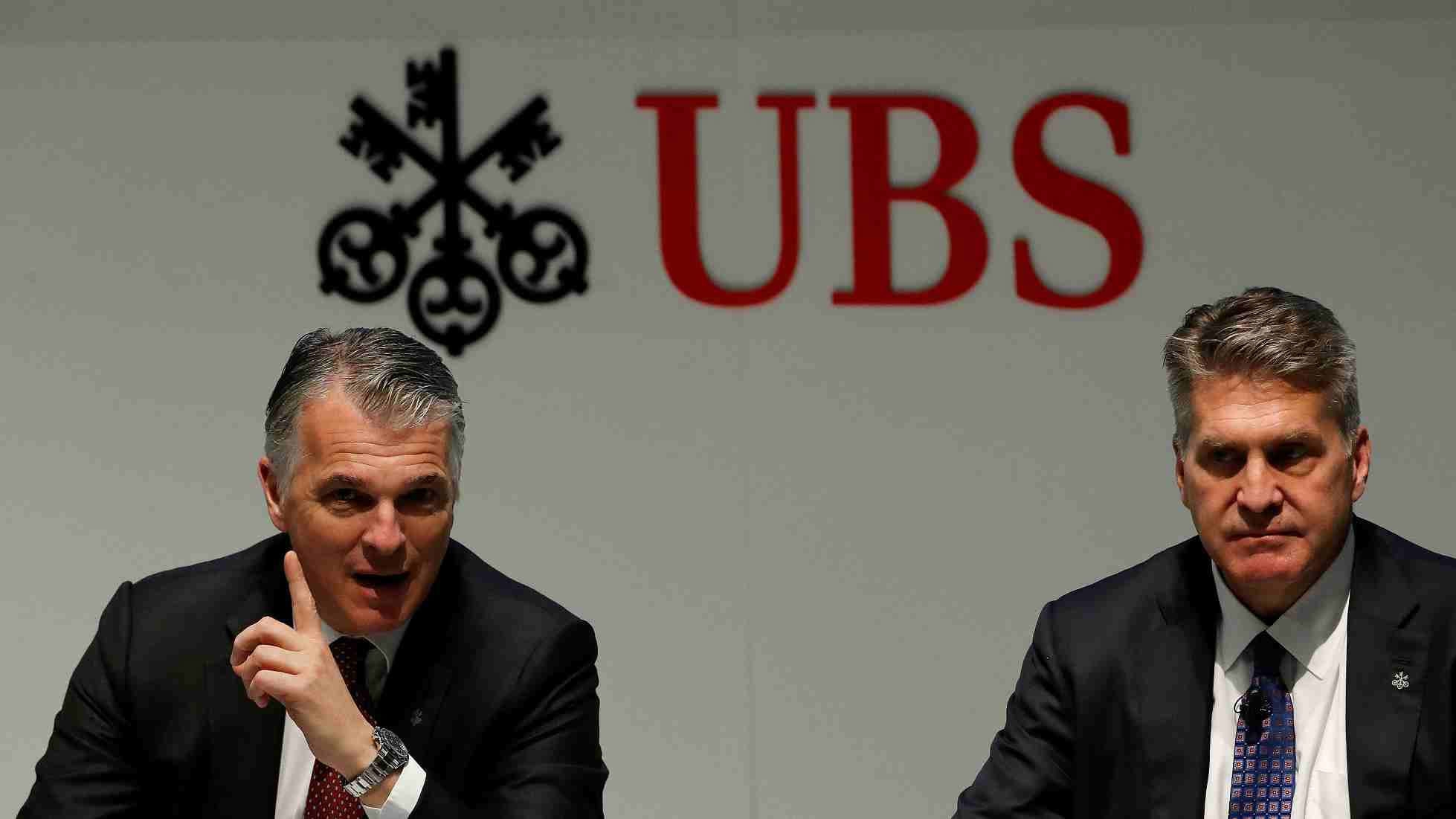
CFO Kirt Gardner sits beside CEO Sergio Ermotti (L) of Swiss bank UBS during the annual news conference in Zurich, Switzerland on January 28. UBS posted a net loss of 2.22 billion francs in the fourth quarter as a result of US tax reform. /VCG Photo
CFO Kirt Gardner sits beside CEO Sergio Ermotti (L) of Swiss bank UBS during the annual news conference in Zurich, Switzerland on January 28. UBS posted a net loss of 2.22 billion francs in the fourth quarter as a result of US tax reform. /VCG Photo
Many successful research institutions and economists, as well as the Democratic Party, are opposed to Trump's tax reforms. They favor simplifying the tax system and encouraging companies to repatriate profits, and they also doubt whether tax cuts will be a panacea for the economy.
After the Reagan tax cut in 1981, US real GDP grew by 7.3% in 1984, but with further tax cuts, America's GDP grew at a negative rate in 1991. In the 1950s, the top rate of personal income tax in the United States was 91 percent, with two years of GDP growth the highest in history.
Immigration policy
“We will soon begin the construction of a great, great wall along our southern border. Bad ones are going out as I speak, and as I promised throughout the campaign.” – Trump in 2017 address
“For the plan to build the barrier on the whole border between the United States and Mexico, and ask for Mexico government’s full contribution, President Trump did not know the actual situation thoroughly at that time, and now his attitude has changed,” said John Kelly, the White House Chief of Staff, on January 17.

Activists pray during a rally in front of the White House to mark the anniversary of "the first Muslim and refugee ban" and subsequent bans, on January 27. /VCG Photo
Activists pray during a rally in front of the White House to mark the anniversary of "the first Muslim and refugee ban" and subsequent bans, on January 27. /VCG Photo
Trump told reporters at the White House on January 24 that he will request 25 billion US dollars to build a wall on the US-Mexico border as part of immigration reform negotiations, as well as 5 billion dollars for other border security measures, according to Xinhua.
US President Donald Trump last September ordered the end of the
Deferred Action for Childhood Arrivals (DACA), a program that prevents Dreamers from deportation and provides them with work permits. Trump asked the Congress to find a legislative alternative by March 5, 2018.
Infrastructure
“To launch our national rebuilding, I will be asking Congress to approve legislation that produces a 1 trillion dollars investment in infrastructure of the United States.” – Trump in 2017 address
Trump said on January 24 that his long-awaited plan to help rebuild
the nation's infrastructure would result in about 1.7 trillion dollars in overall investment over the next 10 years, according to Reuters.
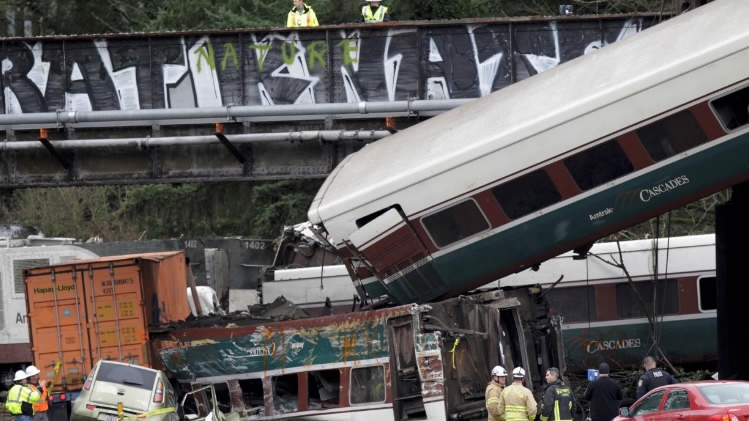
The scene where an Amtrak passenger train derailed on a bridge over interstate highway I-5 in DuPont, Washington, December 18, 2017. /Reuters Photo
The scene where an Amtrak passenger train derailed on a bridge over interstate highway I-5 in DuPont, Washington, December 18, 2017. /Reuters Photo
Tax reform, health reform and other issues make it more difficult for local governments to update the subway system and other infrastructure.
An analysis of the Trump budget has found that it cuts infrastructure spending overall by 55 billion dollars, according to the University of Pennsylvania's Wharton Budget Model, a nonpartisan research organization.
Trump is pushing for a massive infrastructure revamp to create more jobs, but it could increase US debt and inflationary pressure as well, experts said.
Expectation for 2018
Trade,
medical insurance, education,
counter-terrorism, diplomacy are also inevitable focuses, and maybe American spirit.
There is a great possibility that President Trump will cover the aspects above in his first State of the Union Address, and there is no doubt his words will generate applause, or boos.
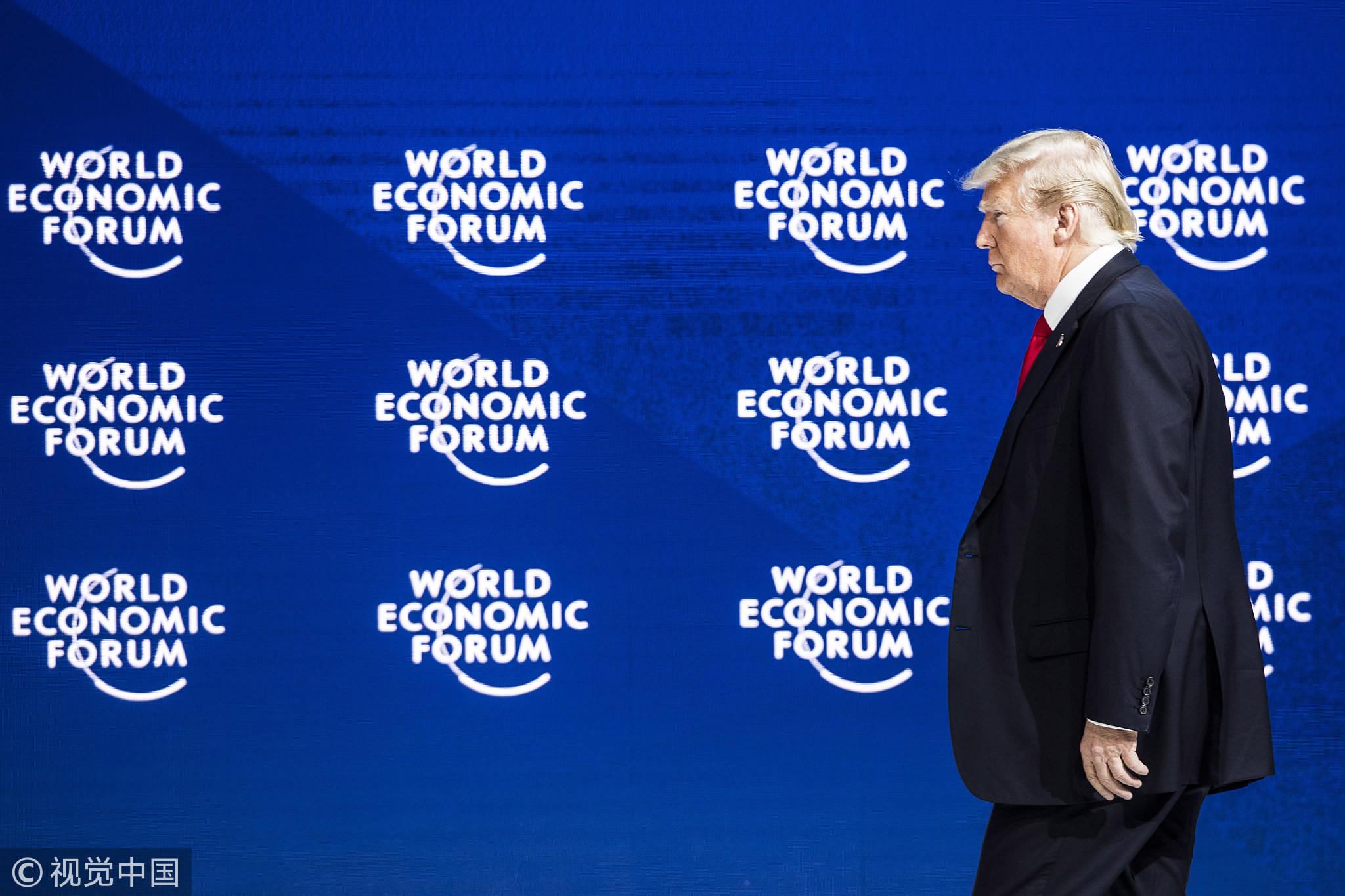
Donald Trump addressed the 2018 World Economic Forum in Davos, Switzerland. /VCG Photo
Donald Trump addressed the 2018 World Economic Forum in Davos, Switzerland. /VCG Photo
Though as Trump suggested in a tweet that most of his inauguration speech was not written by him but by two of his top advisers, we can still make a wise judgment ignoring embellishments and skill in the language of the address and pick out the reliable truth Trump wants for America in 2018.
Or as Kelly John Kelly said in an interview with Fox: "Campaign to governing are two different things, and this president is very, very flexible in terms of what is within the realm of the possible.”

